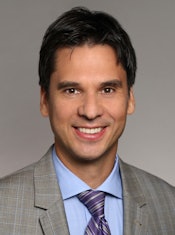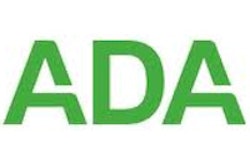
Over the past 10 years, Medicaid reimbursement rates for pediatric dental services have not kept up with inflation, but private insurance rates in most states have seen inflation-related adjustments, according to a new report from the ADA Health Policy Institute.
Reimbursement levels are important to ensure Medicaid beneficiaries can access dental care, the authors noted.
 Marko Vujicic, PhD.
Marko Vujicic, PhD."Understanding the trends in dental care reimbursement is important since financial incentives are a key factor in driving dentist participation in dental benefits plans -- public and private -- and, ultimately, dental care utilization," wrote authors Kamyar Nasseh, PhD, and Marko Vujicic, PhD.
They previously reported that from 2003 to 2013 Medicaid reimbursement fell in 39 states and rose in seven states and the District of Columbia (DC). In 2013, the average pediatric Medicaid fee-for-service (FFS) reimbursement rate was 48.8% of private dental insurance charges.
In this latest report, they looked at whether Medicaid and private insurance rates for pediatric dental care services are keeping up with inflation.
They reported that private dental insurance charges have kept up with overall inflation in all 50 states and DC, with North Dakota, Wyoming, South Dakota, and Wisconsin experiencing the largest increases and Hawaii, Nevada, Washington, and Colorado experiencing the smallest.
Meanwhile, Medicaid FFS reimbursement failed to keep up with overall inflation in 30 states. A total of 14 states and DC have seen increases in real or overall-inflation-adjusted reimbursement, and there is no data over time for the remaining six states.
DC, Connecticut, Texas, and Louisiana have had the largest increases, while Minnesota, Tennessee, Alabama, and New York have had the largest declines.
"I think you are seeing the effect of fiscal austerity in Medicaid programs that led to most states not really increasing fees," explained Vujicic in an interview with DrBicuspid.com "On the private insurance side, I think there is relatively less of this."
He clarified that he did not have solid analytics to back this supposition up.
Specifically looking at dental services inflation, the authors noted that private dental insurance charges have kept up in 31 states and DC, while 19 states saw declines in dental-service- inflation-adjusted charges.
North Dakota, Wyoming, South Dakota, and Wisconsin have had the largest increases in real or dental-service-inflation-adjusted charges. Conversely, Hawaii, Nevada, Washington, and Colorado have seen the largest declines.
Meanwhile, FFS Medicaid reimbursement has failed to keep up in 37 states.
Only seven states and DC have seen an increase in real dental-service-inflation-adjusted Medicaid FFS reimbursement.
What lessons can the rest of the states learn from them?
Connecticut, Maryland, and Texas enacted major Medicaid reforms that increased FFS Medicaid reimbursement and streamlined administrative procedures, which led to positive trends among Medicaid-eligible children, the authors noted.
Vujicic referenced a recent paper published in Health Services Research (December 7, 2014) to illustrate the power of fee increase.
In this paper, he and Nasseh measured the impact of Medicaid reforms -- in particular, increases in Medicaid dental fees in Connecticut, Maryland, and Texas -- on access to dental care among Medicaid-eligible children between 2007 and 2011.
They found that, relative to Medicaid-ineligible children and all children from a group of control states, preventive dental care utilization increased among Medicaid-eligible children in Connecticut and Texas. Unmet dental need declined among Medicaid-eligible children in Texas.
Increasing Medicaid dental fees closer to private insurance fee levels has a significant impact on dental care utilization and unmet dental need among Medicaid-eligible children, the authors concluded.
"Other research based on national and state data suggest strongly that increases in Medicaid FFS reimbursement have a significant impact on dentist participation and access to care," they wrote in the latest report.
The authors also noted that demand for dental care will rise significantly as 3 million children could gain dental benefits in the next few years through Medicaid expansion under the Patient Protection and Affordable Care Act (ACA).
Will this impact the FFS rates in various states?
"I think you should look at the intentions of state Medicaid programs with respect to provider reimbursement," Vujicic told DrBicuspid.com.
The two things he referenced are the recent survey of Medicaid directors from Kaiser and the decision by many states to let the Medicaid fee hike expire.
"Provider reimbursement levels are one of many enabling conditions that incentivize more dentists to treat Medicaid patients," he and his colleague wrote.
Streamlined administrative procedures, community dental coordinators, patient navigators, and other program innovations also are important factors but have not been as closely examined in the research, they concluded.
This remains an important area for future analysis for the ADA Health Policy Institute, they added.



















